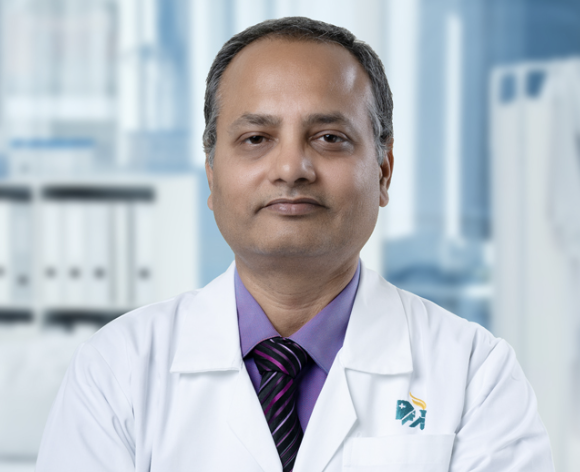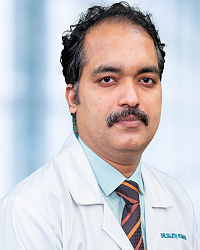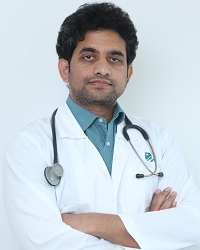Could not find what you are looking for?
- Diseases and Conditions
- Bile Duct Cancer - Early Signs, Risk Factors, Diagnosis, and Treatment Explained
Bile Duct Cancer - Early Signs, Risk Factors, Diagnosis, and Treatment Explained

Overview: What Is Bile Duct Cancer?
Bile duct cancer, also known as cholangiocarcinoma, is a rare but serious type of cancer. It develops in the tubes that carry bile (a fluid helping digest fats) from the liver and gallbladder to the small intestine. Because it often causes no symptoms early, it is usually detected late.
Early detection matters because the cancer can grow silently, and by the time symptoms appear, treatment options may be limited. With advances in imaging, surgery, and targeted therapies, outcomes are improving, but awareness and timely medical care remain crucial.
What Are the Types of Bile Duct Cancer?
Doctors classify bile duct cancer based on where it starts in the bile duct system:
- Intrahepatic Cholangiocarcinoma: Begins in the small bile ducts inside the liver.
- Perihilar Cholangiocarcinoma (Hilar cancer or Klatskin tumor): Starts at the junction where the right and left bile ducts exit the liver.
- Distal Cholangiocarcinoma: Occurs in the portion of the bile duct near the small intestine.
Each type behaves differently, and treatment strategies vary depending on the location.
What Are the Causes of Bile Duct Cancer?
The exact cause of bile duct cancer is not always clear. It usually develops when DNA mutations in bile duct cells make them grow uncontrollably. Some suspected or known causes include:
- Chronic inflammation of the bile ducts
- Bile duct stones or gallstones
- Primary sclerosing cholangitis (PSC) – a rare disease causing long-term inflammation and scarring of the bile ducts
- Liver fluke infections – common in some parts of Asia due to contaminated water or raw fish consumption
- Genetic mutations passed down in families
What Are the Risk Factors of Bile Duct Cancer?
Certain lifestyle, environmental, and medical conditions can raise the risk:
- Age: Most patients are over the age of 50, so advancing age is a key risk factor.
- Chronic liver diseases: Chronic liver diseases, such as cirrhosis and long-term hepatitis B or C infections, increase the likelihood of developing bile duct cancer.
- Family history: A family history of bile duct cancer or certain genetic conditions may raise the risk.
- Smoking and alcohol use: Smoking and regular alcohol use can damage the liver and make bile duct cancer more likely.
- Obesity and diabetes: Being overweight or living with diabetes has been linked to a higher risk of this cancer.
- Occupational exposure: Occupational exposure to harmful chemicals, such as thorotrast (a substance once used in medical imaging but no longer in use), may still pose risks for older individuals who were exposed in the past.
What Are the Symptoms of Bile Duct Cancer?
Early stages may show no clear warning signs. As the disease progresses, symptoms become more noticeable:
Early Signs
- Yellowing of the skin and eyes (jaundice)
- Itchy skin
- Dark urine and pale stools
- Abdominal discomfort or bloating
Advanced Symptoms
- Unexplained weight loss
- Loss of appetite
- Fatigue and weakness
- Fever and night sweats
- Enlarged liver or gallbladder felt during an exam
Since many of these symptoms overlap with other liver or gallbladder conditions, it is important not to ignore them and consult a doctor promptly.
How is Bile Duct Cancer Diagnosed?
Doctors use a combination of tests to confirm bile duct cancer:
- Blood tests: To check liver function and tumor markers like carcinoembryonic antigen (CEA) and CA 19-9.
- Imaging scans: Ultrasound uses sound waves to create images and can serve as an initial screening tool. CT and MRI create detailed images of soft tissues to visualize bile duct tumors. MRCP (Magnetic Resonance Cholangiopancreatography) is a specialized MRI that provides detailed images of the liver, bile ducts, gallbladder, and pancreatic duct.
- Endoscopic Ultrasound (EUS): A probe with an ultrasound is attached to an endoscope and inserted into the digestive tract, allowing for close-up imaging and biopsy of nearby areas.
- ERCP (Endoscopic Retrograde Cholangiopancreatography): A procedure where an endoscope is inserted to view the bile ducts and may take a biopsy or perform other interventions.
- Fine-Needle Aspiration Biopsy (FNAB): A long needle guided by imaging (like an EUS or CT scan) is used to collect tissue from a tumor in or near the liver.
- PTC (Percutaneous Transhepatic Cholangiography): A thin needle is inserted through the skin into the liver and bile ducts to inject dye for X-ray imaging, allowing for visualization of the biliary system.
Staging of Bile Duct Cancer
Staging describes how far the cancer has spread, while grading shows how aggressive the cells appear under a microscope.
Stages of Bile Duct Cancer
- Stage 0 (Carcinoma in situ): Abnormal cells present but not invasive.
- Stage I: Cancer confined to bile ducts.
- Stage II: Spread to nearby tissues.
- Stage III: Spread to nearby lymph nodes or major blood vessels.
- Stage IV: Distant spread to other organs (lungs, bones).
The stage helps doctors decide the right treatment plan and estimate prognosis.
What Are the Treatment Options for Bile Duct Cancer?
Treatment depends on the cancer’s type, stage, and the patient’s overall health.
- Surgery: The most common treatment, involving the removal of the tumor and surrounding tissue. For intrahepatic (within the liver) cancers, this might involve part of the liver (hepatectomy), while for distal cancers, it could be a Whipple procedure. Liver transplantation is a potential curative option for early-stage bile duct cancer, particularly when surgery alone isn't sufficient. Whenever possible, surgery offers the best chance of cure
- Medical Treatments: Chemotherapy uses drugs to kill cancer cells or slow their growth. Targeted therapy drugs specifically attack cancer cell mutations (e.g., FGFR2, IDH1 mutations). Immunotherapy boosts the body’s immune system to fight cancer cells.
- Radiation Therapy: High-energy rays shrink tumors or relieve symptoms. Sometimes combined with chemotherapy.
Proton Therapy: When Is It Applicable?
Proton therapy is a precise form of external radiation treatment that can be used for bile duct cancer, particularly in unresectable cases where the tumor cannot be surgically removed. By targeting protons instead of X-rays, it delivers a high dose of radiation directly to the tumor while minimizing damage to surrounding healthy tissues and organs. This precision is especially beneficial for bile duct cancers, improving local tumor control and offering a promising alternative to conventional radiotherapy, especially for tumors within or near the liver.
What Is the Prognosis for Bile Duct Cancer?
Survival rates depend on cancer stage, overall health, and treatment type:
- Localized cancer (Stage I): 5-year survival rate up to 30–40%.
- Regional cancer (Stage II & III): 5-year survival is around 10-20%.
- Advanced cancer (Stage IV): Survival rate drops significantly (below 10%).
Early detection, surgery, and targeted therapies are improving outlooks, but bile duct cancer remains challenging. Supportive care, clinical trials, and advanced therapies offer hope to many patients.
Screening and Prevention of Bile Duct Cancer
Currently, there are no standard screening tests for bile duct cancer in the general population. However, those at higher risk (such as people with primary sclerosing cholangitis or chronic liver disease) may undergo regular imaging and blood tests.
Prevention Tips
- Avoid excessive alcohol use.
- Stop smoking.
- Maintain a healthy weight and manage diabetes.
- Get vaccinated against hepatitis B.
- Treat liver and bile duct conditions promptly.
For International Patients
People from around the world come to Apollo Hospitals for the treatment of bile duct cancer. Our international patient services team will guide you all the way from seeking the first virtual connect all the way to treatment in India and then returning home post treatment.
Services include:
- Medical opinions and scheduling
- Pre-arrival medical review of reports and imaging.
- Travel and logistics
- Assistance with visa invitation letters, airport transfers, and nearby accommodation options.
- Dedicated international patient coordinators to guide through each step.
- Language and cultural support
- Interpreter services in multiple languages.
- Clear, simple explanations at every stage with written care plans.
- Financial coordination
- Transparent treatment estimates and packages when possible.
- Support with international payment methods and insurance coordination.
- Continuity of care
- Shared records, imaging, and treatment summaries for home doctors.
- Telemedicine follow-ups for convenience after returning home.
Frequently Asked Questions (FAQs)
1. What is the survival rate for bile duct cancer?
Survival depends on the stage. Patients diagnosed early and treated surgically can sometimes live for many years with a good quality of life if detected early, while advanced cases have lower survival rates.
2. Can bile duct cancer be cured?
Surgery offers the best chance of a cure, but many patients are not eligible due to late diagnosis. For others, treatment focuses on controlling cancer and improving quality of life.
3. What are the side effects of treatment?
Chemotherapy: nausea, fatigue, hair loss.
Radiation therapy: skin irritation, digestive upset.
Targeted therapy and immunotherapy: diarrhea, fatigue, liver inflammation.
Doctors will provide supportive medicines and guidance to reduce these side effects.
4. How long does recovery take after surgery?
Hospital stay usually lasts 1–2 weeks, with complete recovery taking 6–8 weeks. Patients may need follow-up care and physiotherapy.
5. What is the risk of recurrence?
Recurrence is common, especially in advanced cases. Regular follow-up scans and blood tests help monitor for signs of return.
6. How much does bile duct cancer treatment cost in India?
Costs vary based on treatment type, stage, and hospital. At Apollo, costs are significantly lower compared to the US or Europe, while maintaining international standards. Apollo Hospitals offers package pricing and financial counseling for patients.
7. Is there any way to detect bile duct cancer early?
Routine screening isn’t available, but people at high risk (primary sclerosing cholangitis, chronic liver disease, family history) should undergo regular imaging and check-ups.











